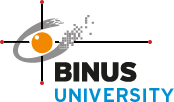Introduction to Accounting II
Learning Outcomes
Upon completion of this course, students are expected to be able to: explain specific accounting principle for liabilities, partnership, and shareholders’ equity; explain the accounting for debt and equity investments; identify accounting ethics practice in specific situation; prepare cash flow statement using direct and indirect methods; apply financial statement analysis.
Topics
Upon successful completion of Introduction Accounting I, which mainly discusses the basic accounting process and accounting for assets, Introduction Accounting II will expand students’ accounting skills in accounting for liability and equity and other accounting topics. After completing this course, the students should be able to describe the differences of financial statements based on the corporate body of the enterprise, use the data of financial statements to a make simple analysis, create records that relate to capital stock transactions, dividends, treasury stock and retained earnings. Material covered in this course include: current liabilities and payroll, organization and capital stock transactions, dividends, retained earnings and income reporting, long term liabilities, investment, and financial statement analysis.
Prerequisite: AC113 – Introduction to Accounting I



SOCIAL MEDIA
Let’s relentlessly connected and get caught up each other.
Looking for tweets ...